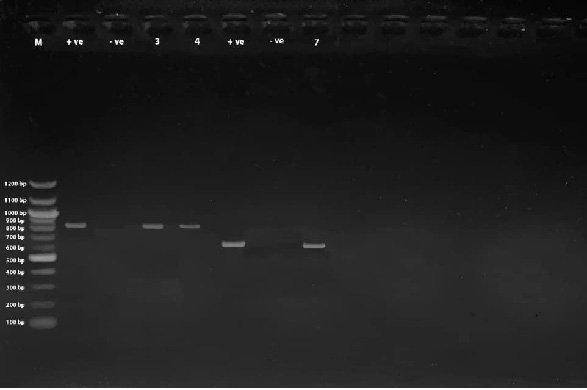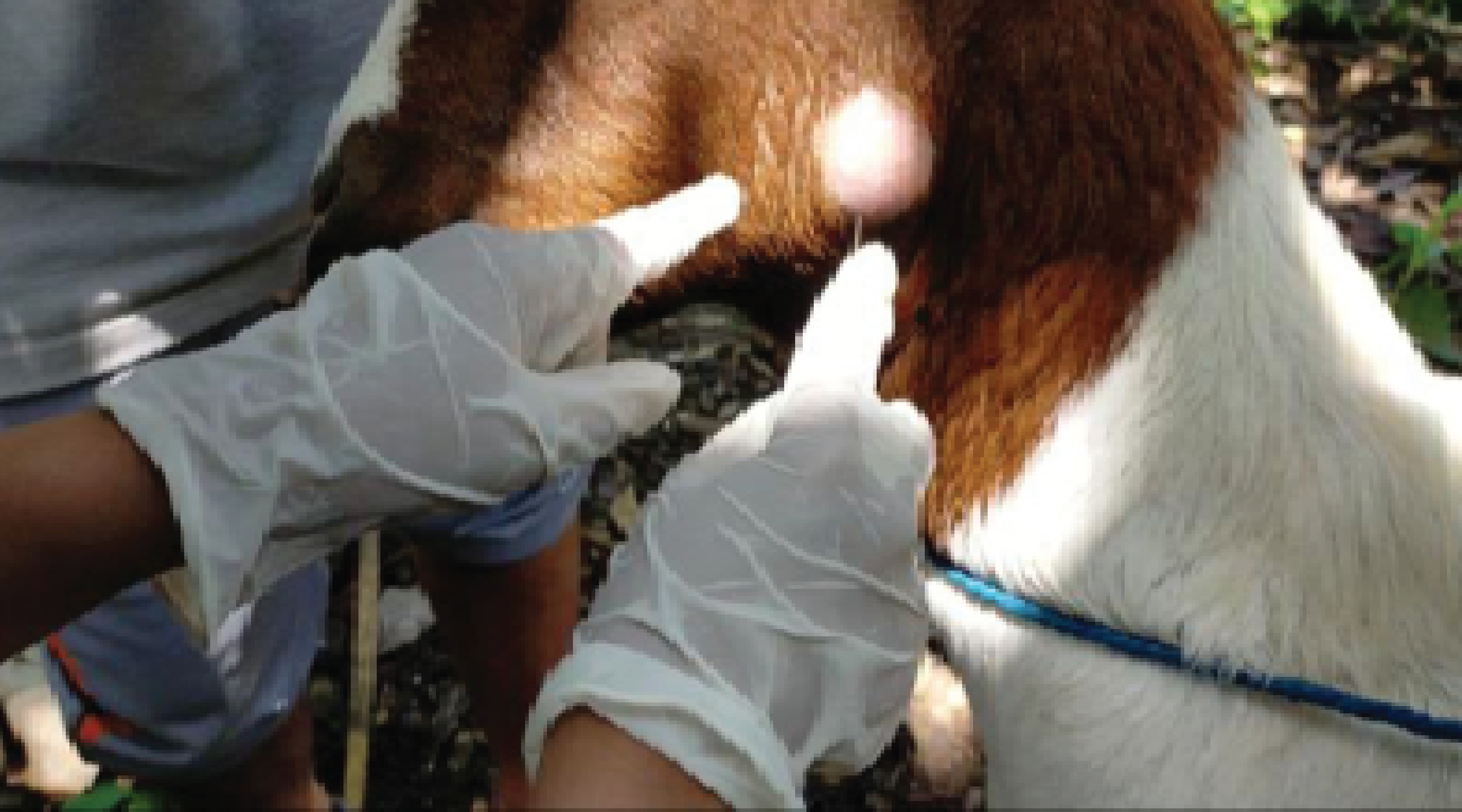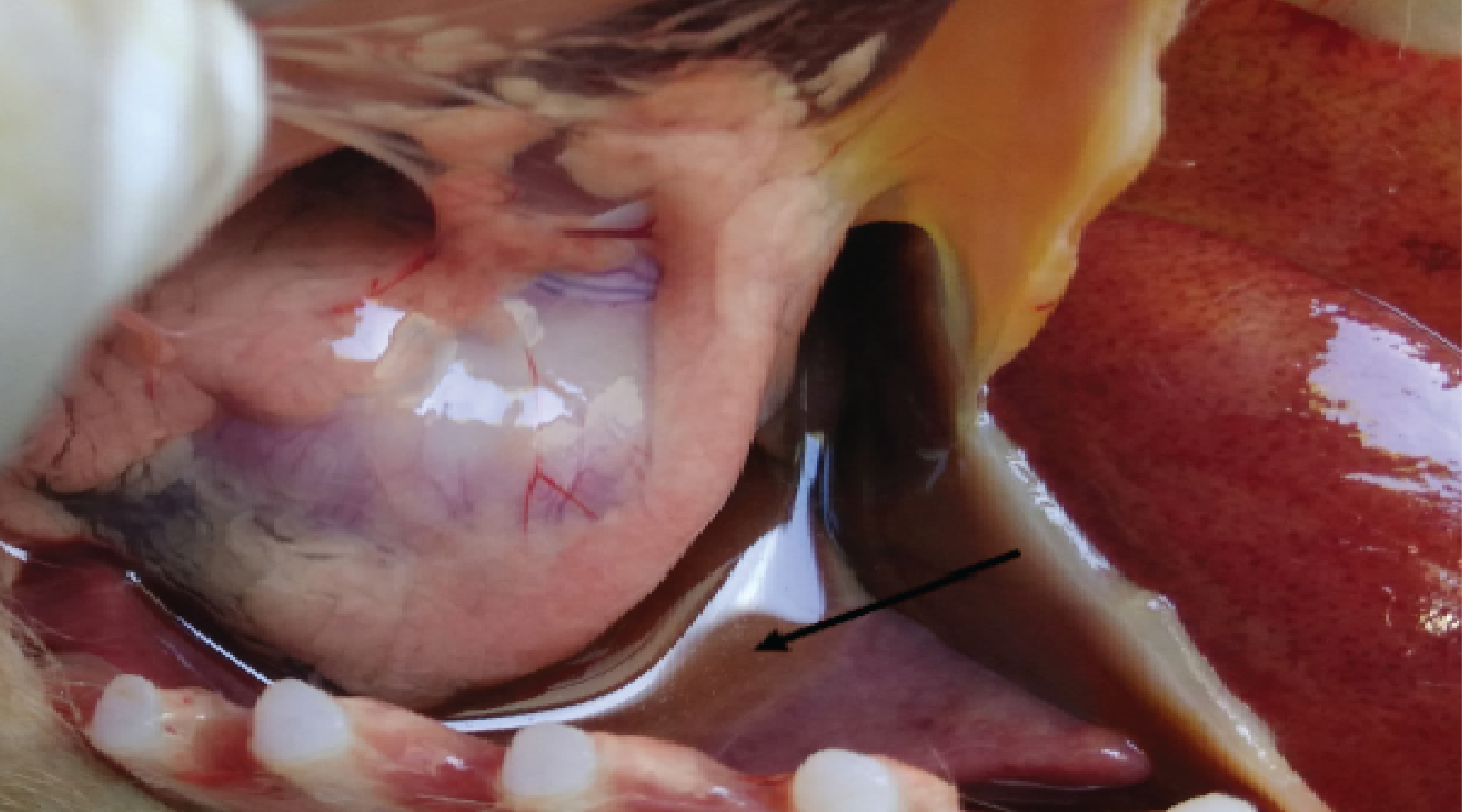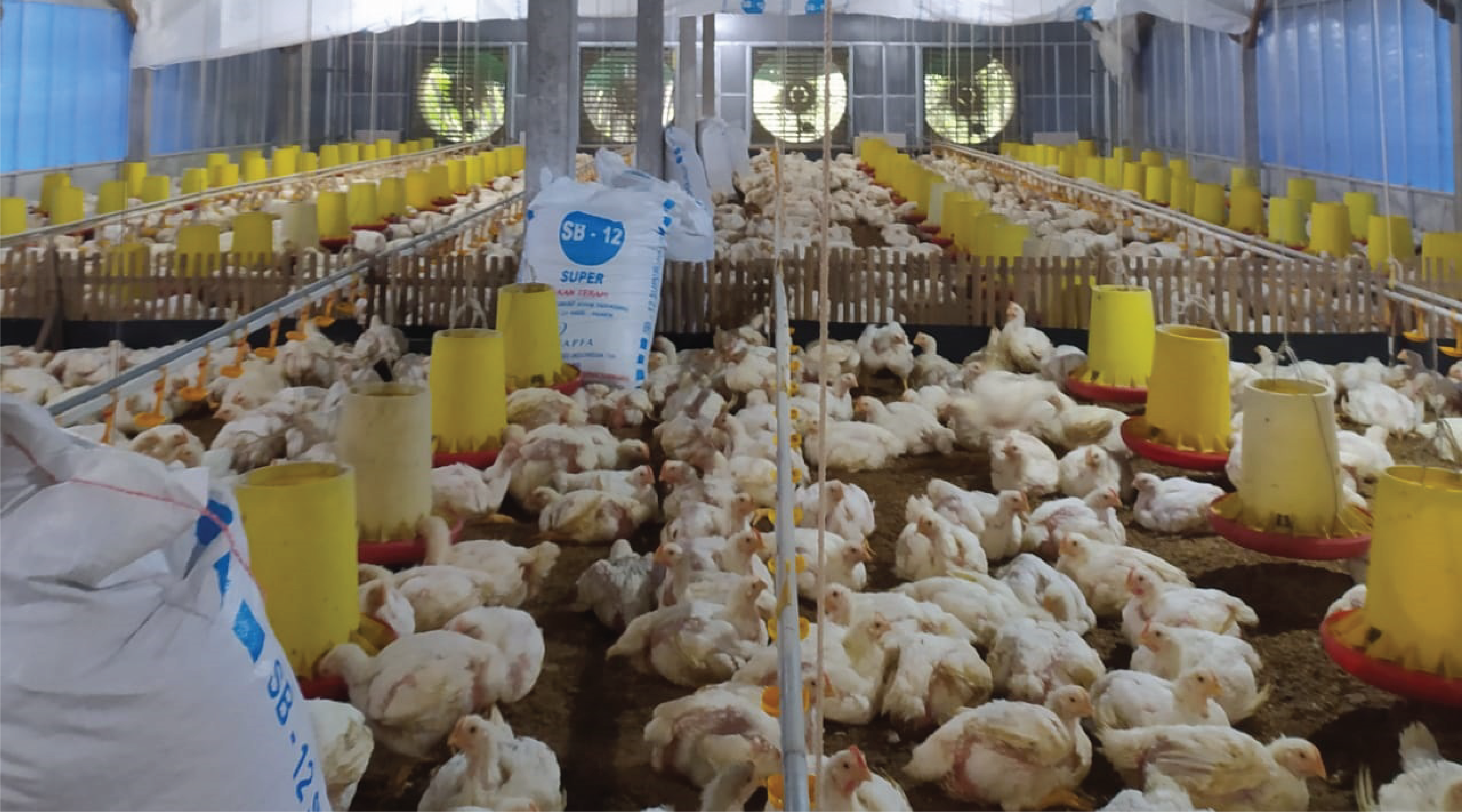Prevalence of Salmonella spp. and Escherichia coli, in Rodents and Shrews with Their Associated Risk Factors

Background: Rodents are known to be a source of foodborne diseases; however, few researchers have examined rodent faeces. Purpose: This study aimed to determine the prevalence of foodborne Salmonella spp. and Escherichia coli (E. coli) and the risk factors associated with rodents and shrews in five wards from Morogoro Municipality, Tanzania. Method: A total of 148 rodents and shrews were captured from domestic, peri-domestic, and marketplace settings. This study isolated bacteria from faeces samples collected from rodents and shrews using a culture test, and identified them using biochemical tests. Molecular tests were used to screen out bacteria-targeted genes. Questionnaires were also used to assess the risk factors of foodborne Salmonella spp. and E. coli associated with house rodents and shrews. Results: Salmonella enterica was detected in 3/148 (2%), and E. coli was found in 54/148 (36.5%) of the samples. Regarding habitat, a high prevalence of E. coli was observed in open markets, at 16.9%, while Salmonella enterica was high inside households, at 1.3%. The results show that 83% of respondents found rodents feces in uncooked or cooked food, 30.4% found rodents feces in the water storage, 93.2% found food eaten by a rodent, and 66.9% of households used food contaminated with feces or eaten by rats. Conclusion: The study shows that rodents and shrews carry foodborne pathogens like Salmonella enterica and Escherichia coli in Morogoro municipality, Tanzania, posing serious public health risks. The rodents had high rates of E. coli and low Salmonella enterica, with risk factors linked to food and water contamination.
Altschup, S.F., Gish, W., Miller, W., Myers, E.W., and Lipman, D.J., 1990. Basic Local Alignment Search Tool. Journal of Molecular Biology, 215(3), 403-410.
Bagus, I., Wibawa, G.A., Darwinata, A.E., Nengah, N., Fatmawati, D., and Budayanti, N.S., 2017. Rapid Detection of Methicillin-Resistant Staphylococci Using Multiplex PCR With Boiling Method for DNA Isolation. Journal of Health Sciences and Medicine, 1(2), 8-10.
Chlebicz, A., 2018. Listeriosis as Zoonotic Foodborne Diseases: A Review. International Journal of Environmental Research and Public Health, 15(5), 1-28.
Cissé, G., 2019. Foodborne and Water-borne Diseases under Climate Change in Low- and Middle-income Countries: Further Efforts Needed for Reducing Environmental Health exposure risks. Acta Tropica, 194, 181–188.
Dashti, A. A., and Dashti, H., 2009. Heat Treatment of Bacteria: A Simple Method of DNA Extraction for Molecular Techniques. The Journal of the Kuwait Medical Association, 41(2), 1-7.
Delibes-Mateos, M., Smith, A.T., Slobodchikoff, C.N., and Swenson, J.E., 2011. The Paradox of Keystone Species Persecuted as Pests: A Call for the Conservation of Abundant Small Mammals in Their Native Range. Biological Conservation, 144(5), 1335–1346.
Fairbrother, J.M., and Nadeau, É., 2006. Escherichia coli: On-farm Contamination of Animals. Revue scientifique et technique (International Office of Epizootics), 25(2), 55-69.
Gascuel, O., and Steel, M., 2006. Neighbor-joining revealed. Molecular Biology and Evolution, 23(11), 1997–2000.
Greig, J., Rajić, A., Young, I., Mascarenhas, M., Waddell, L., and Lejeune, J., 2015. A Scoping Review of the Role of Wildlife in the Transmission of Bacterial Pathogens and Antimicrobial Resistance to the Food Chain. Zoonoses and Public Health, 62(4), 269–284.
Hall, B.G., 2013. Building Phylogenetic Trees from Molecular Data with MEGA. Molecular Biology and Evolution, 30(5), 1229–1235.
Hanson, R., Kaneene, J. B., Padungtod, P., Hirokawa, K., and Zeno, C., 2002. Prevalence of Salmonella and E. coli, and Their Resistance to Antimicrobial Agents, in Farming Communities in Northern Thailand. The South East Asian Journal of Tropical Medicine in Public Health, 3(3), 120-126.
Hardgrove, E., Zimmerman, D.M., von Fricken, M.E., and Deem, S., 2021. A Scoping Review of Rodent-Borne Pathogen Presence, Exposure, And Transmission At Zoological Institutions. Preventive Veterinary Medicine, 193, 1-22.
Hill, W.A., and Brown, J.P., 2011. Zoonoses of Rabbits and Rodents. Veterinary Clinics of North America - Exotic Animal Practice, 14(3), 519–531.
Himsworth, C.G., Zabek, E., Desruisseau, A., Jane Parmley, E., Reid-Smith, R., Jardine, C. M., Tang, P., and Patrick, D.M., 2015. Prevalence And Characteristics of Escherichia Coli and Salmonella spp. in The Feces of Wild Urban Norway and Black Rats (Rattus Norvegicus And Rattus Rattus) from An Inner-City Neighborhood Of Vancouver, Canada. Journal of Wildlife Diseases, 51(3), 589–600.
Hoffmann, A., Decher, J., Rovero, F., Schaer, J., Voigt, C., and Wibbelt, G., 2010. Field Methods and Techniques for Monitoring Mammals. In Manual on field Recording Techniques and Protocols for All Taxa Biodiversity Inventories and Monitoring. Sofia: Pensoft Publishers, 482-529.
Hosein, A., Munoz, K., Sawh, K., and Adesiyun, A., 2008. Microbial Load and the Prevalence of Escherichia coli, Salmonella spp. and Listeria spp. in Ready-to-Eat Products in Trinidad. The Open Food Science Journal, 2(1), 23–28.
Islam, M.M., Farag, E., Hassan, M.M., Enan, K.A., Mohammad Sabeel, K.V., Alhaddad, M.M., Smatti, M.K., Al-Marri, A.M., Al-Zeyara, A.A., Al-Romaihi, H., Yassine, H.M., Sultan, A.A., Bansal, D., and Mkhize-Kwitshana, Z., 2022. Diversity of Bacterial Pathogens and Their Antimicrobial Resistance Profile Among Commensal Rodents In Qatar. Veterinary Research Communications, 46(2), 487–498.
Issae, A., Chengula, A., Kicheleri, R., Kasanga, C., and Katakweba, A., 2023. Knowledge, Attitude, and Preventive Practices Toward Rodent-Borne Diseases in Ngorongoro district, Tanzania. Journal of Public Health in Africa, 14(6), 1-10.
Issae, A.R., Katakweba, A.S., Kicheleri, R.P., Chengula, A.A., van Zwetselaar, M., and Kasanga, C.J., 2023. Exploring Pathogenic and Zoonotic Bacteria from Wild Rodents, Dogs, and Humans of the Ngorongoro District in Tanzania Using Metagenomics Next-Generation Sequencing. Zoonotic Diseases, 3(3), 226–242.
Iyer, A., Kumosani, T., Yaghmoor, S., Barbour, E., Azhar, E., and Harakeh, S., 2013. Escherichia coli and Salmonella spp. in meat in Jeddah, Saudi Arabia. Journal of Infection in Developing Countries, 7(11), 812–818.
Jahan, N.A., Lindsey, L.L., and Larsen, P.A., 2021. The Role of Peridomestic Rodents as Reservoirs for Zoonotic Foodborne Pathogens. Vector-Borne and Zoonotic Diseases, 21(6), 133–148.
James, G., 2010. Universal bacterial identification by PCR and DNA sequencing of 16S rRNA gene. In PCR for Clinical Microbiology: An Australian and International Perspective. Dordrecht: Springer, 209-214.
Jemilehin, F.O., Ogunleye, A.O., Okunlade, A.O., and Ajuwape, A.T.P., 2016. Isolation of Salmonella species and Some Other Gram-Negative Bacteria From Rats Cohabitating With Poultry in Ibadan, Oyo State, Nigeria. African Journal of Microbiology Research, 10(29), 1104–1110.
Kadariya, J., Smith, T.C., and Thapaliya, D., 2014. Staphylococcus aureus and Staphylococcal Foodborne Disease: An Ongoing Challenge in Public Health. BioMed Research International, 2014(1), 1-9.
Khosravi, A. D., Hoveizavi, H., and Farshadzadeh, Z., 2012. The Prevalence Of Genes Encoding Leukocidins In Staphylococcus Aureus Strains Resistant And Sensitive To Methicillin Isolated From Burn Patients In Taleghani Hospital, Ahvaz, Iran. Burns, 38(2), 247–251.
Kimwaga, B., Mzula, A., and Mnyone, L., 2022. Antimicrobial Proles of Pathogenic Enteric Bacteria Isolated from Commensal Rodents and Cockroaches from Morogoro Region in Tanzania: An environmental vehicle for resistance transmission to humans and animals. Journal of Health, Medicine, and Nursing, 105, 46-53.
Kumar, S., Stecher, G., and Tamura, K., 2021. MEGA11: Molecular Evolutionary Genetics Analysis version 11. Molecular Bilogi and Evolution, 38(7), 3022-3027.
Länsimies-Antikainen, H., Laitinen, T., Rauramaa, R., and Pietilä, A.M., 2010. Evaluation of Informed Consent In Health Research: A Questionnaire Survey. Scandinavian Journal of Caring Sciences, 24(1), 56–64.
Ma, Y., Ding, S., Fei, Y., Liu, G., Jang, H., and Fang, J., 2019. Antimicrobial Activity Of Anthocyanins and Catechins Against Foodborne Pathogens Escherichia coli and Salmonella. Food Control, 106, 1-8.
Meerburg, B.G., Singleton, G.R., and Kijlstra, A., 2009. Rodent-Borne Diseases And Their Risks for Public Health Rodent-Borne Diseases And Their Risks For Public Health. Critical Reviews in Microbiology, 35(3), 221-270.
Moawad, A.A., Hotzel, H., Awad, O., Tomaso, H., Neubauer, H., Hafez, H.M., and El-Adawy, H., 2017. Occurrence of Salmonella enterica and Escherichia coli in Raw Chicken and Beef Meat In Northern Egypt And Dissemination Of Their Antibiotic Resistance Markers. Gut Pathogens, 9(1), 1-17.
Murray, M.H., Fidino, M., Fyffe, R., Byers, K.A., Pettengill, J.B., Sondgeroth, K.S., Killion, H., Magle, S.B., Rios, M.J., Ortinau, N., and Santymire, R.M., 2020. City Sanitation and Socioeconomics Predict Rat Zoonotic Infection Across Diverse Neighborhoods. Zoonoses and Public Health, 67(6), 673–683.
Mweshi, G.K., and Sakyi, K., 2020. Application Of Sampling Methods For The Research Design. Archives of Business Research, 8(11), 180–193.
Nagata, N., Tohya, M., Takeuchi, F., Suda, W., Nishijima, S., Ohsugi, M., Ueki, K., Tsujimoto, T., Nakamura, T., Kawai, T., Miyoshi-Akiyama, T., Uemura, N., and Hattori, M., 2019. Effects of Storage Temperature, Storage Time, and Cary-Blair Transport Medium on The Stability Of The Gut Microbiota. Drug Discoveries & Therapeutics, 13(5), 256–260.
Nanteza, A., Obara, I., Kasaija, P., Mwega, E., Kabi, F., Salih, D.A., Njahira, M., Njuguna, J., Odongo, D., Bishop, R.P., Skilton, R.A., Ahmed, J., Clausen, P.H., and Lubega, G.W., 2020. Antigen Gene And Variable Number Tandem Repeat (VNTR) Diversity In Theileria Parva Parasites From Ankole Cattle In South-Western Uganda: Evidence For Conservation In Antigen Gene Sequences Combined With Extensive Polymorphism At VNTR loci. Transboundary and Emerging Diseases, 67(1), 99–107.
Ndunguru, J.N., and Ndossi, D.G., 2020. Bacteriological Analysis of Ready-to-eat Foods from Morogoro Municipal Market. Tanzania Veterinary Journal, 37, 17–24.
Nkogwe, C., Raletobana, J., Stewart-Johnson, A., Suepaul, S., and Adesiyun, A., 2011. Frequency of detection of Escherichia coli, Salmonella spp., and Campylobacter spp. in the Faeces of Wild Rats (Rattus spp.) in Trinidad and Tobago. Veterinary Medicine International, 2011, 1-7.
Paião, F.G., Arisitides, L.G.A., Murate, L.S., Vilas-Bôas, G.T., Vilas-Boas, L.A., and Shimokomaki, M., 2013. Detection of Salmonella spp, Salmonella Enteritidis, and Typhimurium in Naturally Infected Broiler Chickens By A Multiplex PCR-Based Assay. The Brazilian Society of Microbilogy, 44(1), 37-41.
Phifer-Rixey, M., and Nachman, M.W., 2015. The Natural History Of Model Organisms Insights Into Mammalian Biology From The Wild House Mouse Mus musculus. Evolutionary Biology, 4, 1-13.
Pimentel Sobrinho, C., Lima Godoi, J., Neves Souza, F., Graco Zeppelini, C., Espirito Santo, V., Carvalho Santiago, D., Sady Alves, R., Khalil, H., Carvalho Pereira, T., Hanzen Pinna, M., Begon, M., Machado Cordeiro, S., Neves Reis, J., and Costa, F., 2020. Prevalence of Diarrheagenic Escherichia coli (DEC) and Salmonella spp. with zoonotic potential in urban rats in Salvador, Brazil. Epidemiology and Infection, 149(128), 1-5.
Rahayuningtyas, I., Indrawati, A., Wibawan, I.W.T., Palupi, M.F., and Istiyaningsih, I., 2020. Phylogenetic Group Determination And Plasmid Virulence Gene Profiles Of Colistin-Resistant Escherichia Coli Originated From The Broiler Meat Supply Chain In Bogor, Indonesia. Veterinary World, 13(9), 1807–1814.
Rakshna, M., Parasuraman, G., Rakshna, M., Dutta, R., and Jain, T., 2020. A Study on The Knowledge, Attitude, And Practices Of Food Hygiene Among School-Going Children Aged Between 11 To 15 Years In Chennai, Tamil Nadu. Annals of Tropical Medicine and Public Health, 23(23), 1-8.
Ribas, A., Saijuntha, W., Agatsuma, T., Prantlová, V., and Poonlaphdecha, S., 2016. Rodents as a Source of Salmonella Contamination in Wet Markets in Thailand. Vector-Borne and Zoonotic Diseases, 16(8), 537–540.
Shahryari, A., Aali, R., Zare, M.R., and Ghanbari, R., 2017. Relationship between Frequency of Escherichia Coli and Prevalence of Salmonella and Shigella spp. in a Natural River. Journal of Environmental Health and Sustainable Development, 2(4), 416-421.
Silva, D.S.P., Canato, T., Magnani, M., Alves, J., Hirooka, E.Y., and de Oliveira, T.C.R. M., 2011. Multiplex PCR for simultaneously detecting Salmonella spp. and Salmonella Enteritidis in food. International Journal of Food Science and Technology, 46(7), 1502–1507.
Sonola, V.S., Katakweba, A.S., Misinzo, G., and Matee, M.I.N., 2021. Occurrence of Multi-drug-resistant Escherichia coli in Chickens, Humans, Rodents, and Household Soil in Karatu, Northern Tanzania. Antibiotics, 10(9), 1-12.
Tawyabur, M., Islam, M.S., Sobur, M.A., Hossain, M.J., Mahmud, M.M., Paul, S., Hossain, M.T., Ashour, H.M., and Rahman, M.T., 2020. Isolation And Characterization Of Multidrug-Resistant Escherichia coli and Salmonella spp. from healthy and diseased turkeys. Antibiotics, 9(11), 1–14.
Thomas, S.M., Soka, G. E., and Mulungu, L.S., 2022. Influence of Vegetation Structure, Seasonality, And Soil Properties on Rodent Diversity And Community Assemblages In West Mount Kilimanjaro, Tanzania. Ecology and Evolution, 12(9), 1-16.
Torgerson, P.R., Devleesschauwer, B., Praet, N., Speybroeck, N., Willingham, A.L., Kasuga, F., Rokni, M.B., Zhou, X.N., Fèvre, E. M., Sripa, B., Gargouri, N., Fürst, T., Budke, C.M., Carabin, H., Kirk, M.D., Angulo, F.J., Havelaar, A., and de Silva, N., 2015. World Health Organization Estimates of the Global and Regional Disease Burden of 11 Foodborne Parasitic Diseases, 2010: A Data Synthesis. PLoS Medicine, 12(12), 1–22.
Wasiński, B., 2019. Extra-intestinal Pathogenic Escherichia coli – Threat Connected with Foodborne Infections. Annals of Agricultural and Environmental Medicine, 26(4), 532–537.
Winfield, M. D., and Groisman, E.A., 2003. Role Of Nonhost Environments in The Lifestyles of Salmonella and Escherichia coli. Applied and Environmental Microbiology, 69(7), 3687–3694.
World Health Organization (WHO)., 2015. WHO Estimates of The Global Burden of Foodborne Diseases. Geneva: Foodborne Disease Burden Epidemiology Reference Group.
Zhang, K., Fu, Y., Li, J., and Zhang, L., 2022. Public Health and Ecological Significance Of Rodents in Cryptosporidium Infections. One Health, 14, 1-12.
Zheng, M., 2015. Conceptualization of Cross-Sectional Mixed Methods Studies in Health Science: A Methodological Review. International Journal of Quantitative and Qualitative Research Methods, 3(2), 66-87.
Copyright (c) 2024 Author(s)

This work is licensed under a Creative Commons Attribution-ShareAlike 4.0 International License.
- The journal allows the author to hold the copyright of the article without restrictions.
- The journal allows the author(s) to retain publishing rights without restrictions.
- The legal formal aspect of journal publication accessibility refers to Creative Commons Attribution Share-Alike (CC BY-SA).

Journal of Applied Veterinary Science and Technology is licensed under a Creative Commons Attribution-ShareAlike 4.0 International License





























